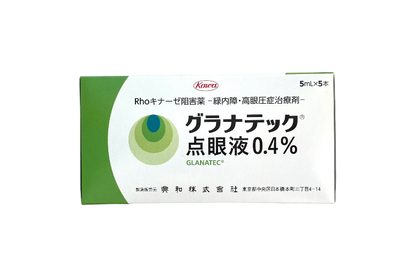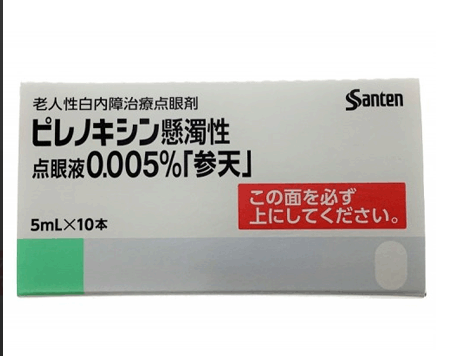Pirenoxine ophthalmic suspension 0.005% (Santen ) 5ml 10vial.
31,00 €
eye drops for cataracts
In stock
Save this product for later
Customer reviews
Reviews only from verified customers
No reviews yet. You can buy this product and be the first to leave a review.
Pirenoxine ophthalmic suspension 0.005% (Santen ) 5ml 10vial.
Product Details
Pyrenoxine ophthalmic suspension 0.005% (Centen) 5 ml. 10 vials
Active ingredient: Pirenoxin (Pirenoxin)
Manufacturer: Santen Pharmaceutical
Description/Indications for use
The pharmacological effect is anti-cataract.
Pyrenoxine competitively inhibits the binding of quinones to the water-soluble lens protein and prevents lens degeneration, thereby preventing lens opacity. By inhibiting the action of quinone substances, pyrenoxine prevents the development of cataracts.
The drug is used to slow the progression of early senile cataracts.
Composition and form of release
Ophthalmic suspension of 5 ml. orange color when shaken, the bottle is bright orange, the cap is white
Dosage/Method of application
Your dosage schedule should be prescribed by your doctor or healthcare professional.
It is standard to instill 1-2 drops conjunctively 3-5 times a day. Wash your hands thoroughly with soap and running water before use. Then shake the bottle well and open the lid. Lower the lower eyelid and drip into the conjunctival sac. When instilling, do not touch the tip of the pipette to the eyes or eyelashes. After application, close your eyes for a while, do not blink. Wipe off excess liquid with a clean gauze or napkin. Wait for more than 5 minutes before applying any other eye drops.
If you forgot to drip the medicine in time, then drip as soon as possible after you remember. If it is already time for the next dose, then skip the forgotten dose and continue your usual dosing schedule. Do not use two doses at the same time. If you have accidentally used more of the drug than you are prescribed, then consult your doctor or pharmacist.
Do not stop using the medicine without your doctor's instructions.
Warnings
Before use, be sure to inform your doctor or pharmacist if:
- have you had allergic reactions to any medications (redness, itching, etc.)
- do you wear contact lenses
- are you pregnant or breastfeeding
- take any other medications or medications (medications can interact with each other, reducing or weakening the effect of each other. The same applies to over-the-counter medicines and dietary supplements).
Special warnings
This medicine can cause staining of clothes in case of accidental contact. In case of contact with clothing, rinse with water as soon as possible.
Possible adverse reactions to this medicine
Common adverse reactions include blepharitis (eyelid erosion), contact dermatitis, diffuse superficial keratitis (eye pain, impaired focus, foreign body sensation in the eyes), bloodshot eyes, conjunctivitis, burning/itchy eyes, blurred vision, eye mucus, watery eyes and abnormal sensation in the eyes. If any of these symptoms occur, consult your doctor or pharmacist.
The symptoms described below are rarely considered as the initial symptoms of adverse reactions indicated in parentheses. If any of these symptoms occur, stop taking this medicine and consult a doctor immediately.
- There are no relevant records.
The above symptoms do not describe all the adverse reactions to this medicine. Consult your doctor or pharmacist if you notice any disturbing symptoms other than those listed above.
Storage method
In a place protected from light at room temperature. Keep out of reach of children.
The shape and color of the package may be changed by the manufacturer without prior notice.
The description of medical drugs is not intended for prescribing treatment without the participation of a doctor.
You May Also Like

GLANATEC ophthalmic solution 0.4% 5 ml 5 vials
GLANATEC ophthalmic solution 0.4% 5 ml 5 vials
Eye drops for the treatment of glaucoma
178,20 €
